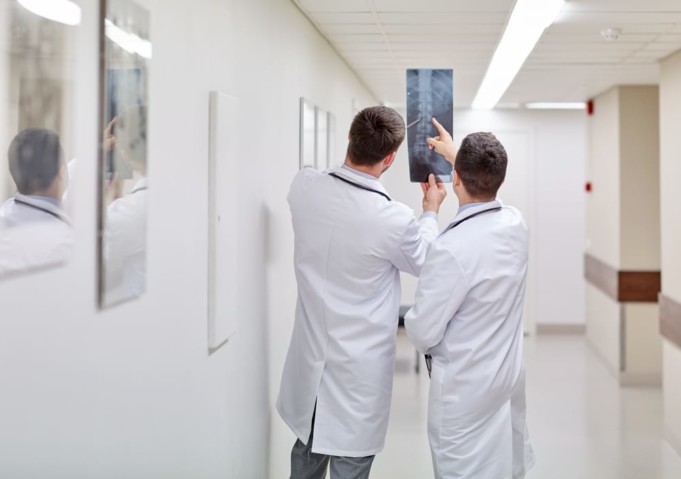There are three main benefits to Endoscopic Spine Surgery
- Less Risk of infection
- Less Recovery time and Post-Operative Pain
- Reduced scarring
There is a high success rate amongst patients, along with low patient risk. There is less muscle and tissue damage because the procedure is only minimally invasive, thanks to the techniques used. Minimal blood loss along with a smaller chance of infections after the operation. A big bonus for this procedure for the patient is that there is less pain during and after the procedure.
Same day surgery, in some cases this is on an outpatient basis, which means that patients are under anaesthetic for a shorter period of time and recovery is quicker so that the patient can return to normal living sooner. There is also less scarring visible, being so small after a short time it becomes hardly visible. Patients that are non-smokers and lead a healthy lifestyle will recover even quicker.
What is Endoscopic Spine Surgery?
This is a surgery that is an alternative to opening up the back to correct spinal problems. Which meant that they used to cut through layers of muscle and took longer to repair.
Instead of a large scar, Endoscopic Spine Surgery means there is only a small incision (this is typically no more than 10mm, a guided wire is then inserted to locate the spinal canal, and /or disk, vertebral bone etc) and then an endoscope can be inserted to enable the surgeon to conduct the surgery within this small area.
At the end of the endoscope there is attached a small camera and surgical light, the camera sends video pictures enabling the surgeon to carry out the procedure with minimal disruption to the surrounding areas.
Bearing this in mind, Endoscopic Spine Surgery requires sophisticated equipment which is being updated regularly, precise diagnosis and experienced neurosurgical expertise. The pioneer for Endoscopic Spine Surgery was Anthony Yeung MD in Phoenix Arizona he developed the technique in the early 1990’s and the technique has been (and continues) to be perfected and improved upon.
This involves high resolution images, finding out from the patient when the condition started and sometimes what caused the problem, the more information the patient can give the surgeon the better the picture can be understood, before the surgery commences.
Which conditions can Endoscopic Spine Surgery be used for?
There is a wide range of conditions that Endoscopic Spine Surgery can help with, please bear in mind this is not a complete range – as with all things medical, techniques and advances are being made at a rapid rate.
Unfortunately, Sciatica and slipped discs are all too common, but Endoscopic Spine Surgery can help problems like: Degenerative Scoliosis (curvature of the spine), nerve compression, leaking discs and in some cases previously failed fusion surgery and total disc replacement surgery.
If Endoscopic Spine Surgery is something that you are considering you must make sure that the procedure that you are going to have is carried out by a spinal surgeon, as this is a specialist field of expertise, and the surgeon will have completed several years in orthopaedic and spinal surgery.
Orthopaedic spinal surgeons and neurosurgeons are equally qualified to carry out these procedures, as they carry out lumbar, thoracic and cervical, spinal fusion, a lot of spinal surgeons carry out extra training to specialize in this field, don’t be afraid to ask your surgeon about his qualifications, after all it is your body and you should feel happy and confident in the surgeon that is going to carry out the procedure.
Questions you should ask yourself before the procedure takes place
- Has everything been fully explained about the cause of the pain and the diagnosis?
- Were you offered alternatives that may have been non-surgical, that could be tried perhaps before surgery?
- Do you feel comfortable and relaxed with the surgeon, and feel confident in his proficiency?
- Do you have any family or friends that have had this sort of surgery?
- Can they recommend a particular surgeon?
- As with all surgery there is always a risk, has your surgeon explained what these could be?












